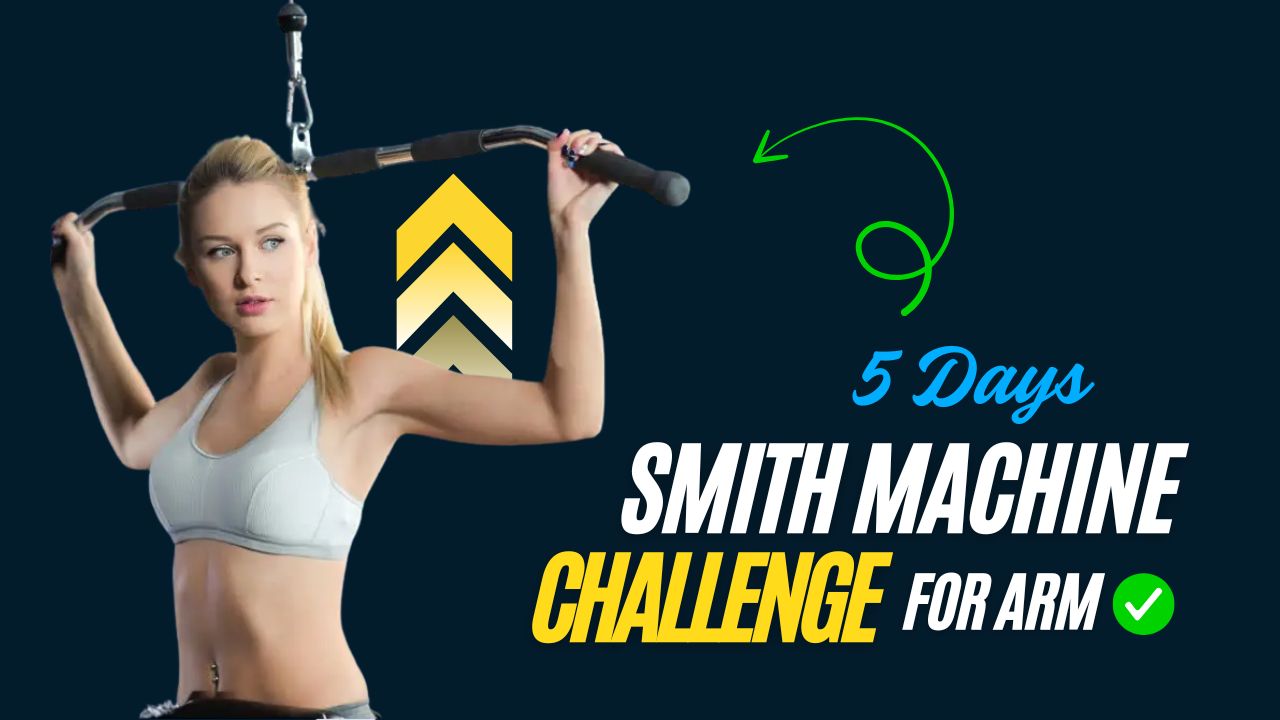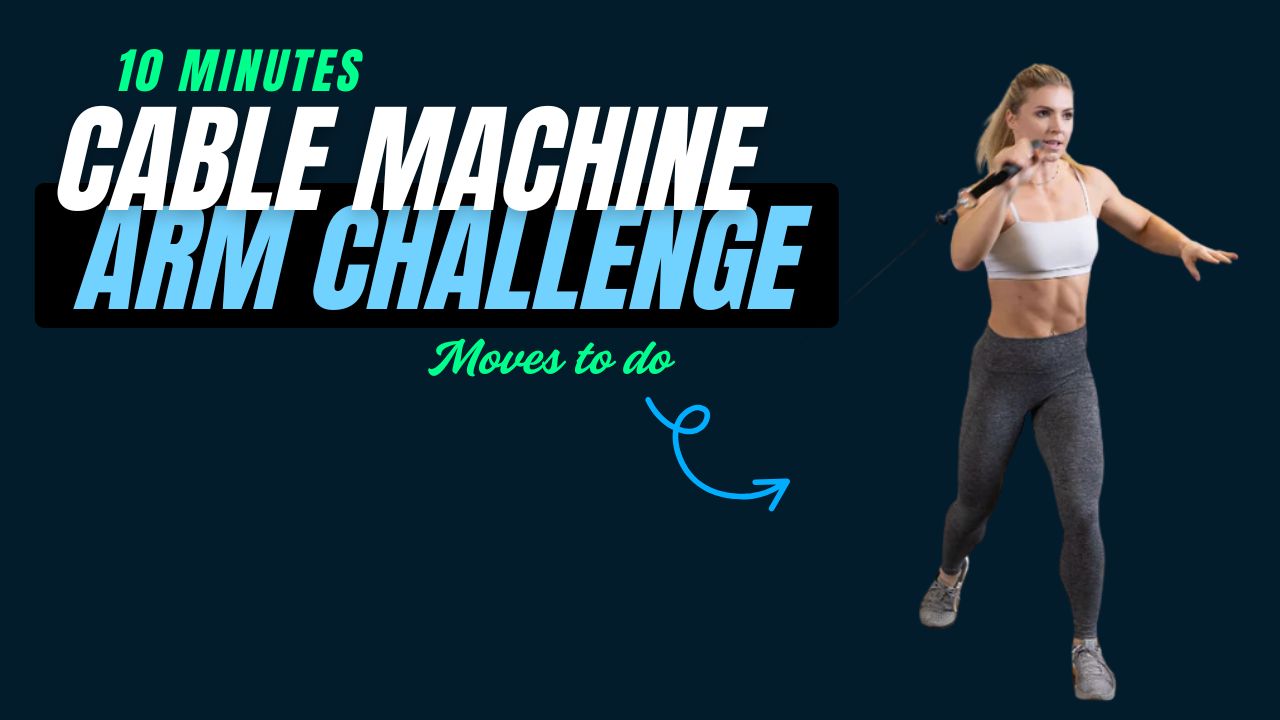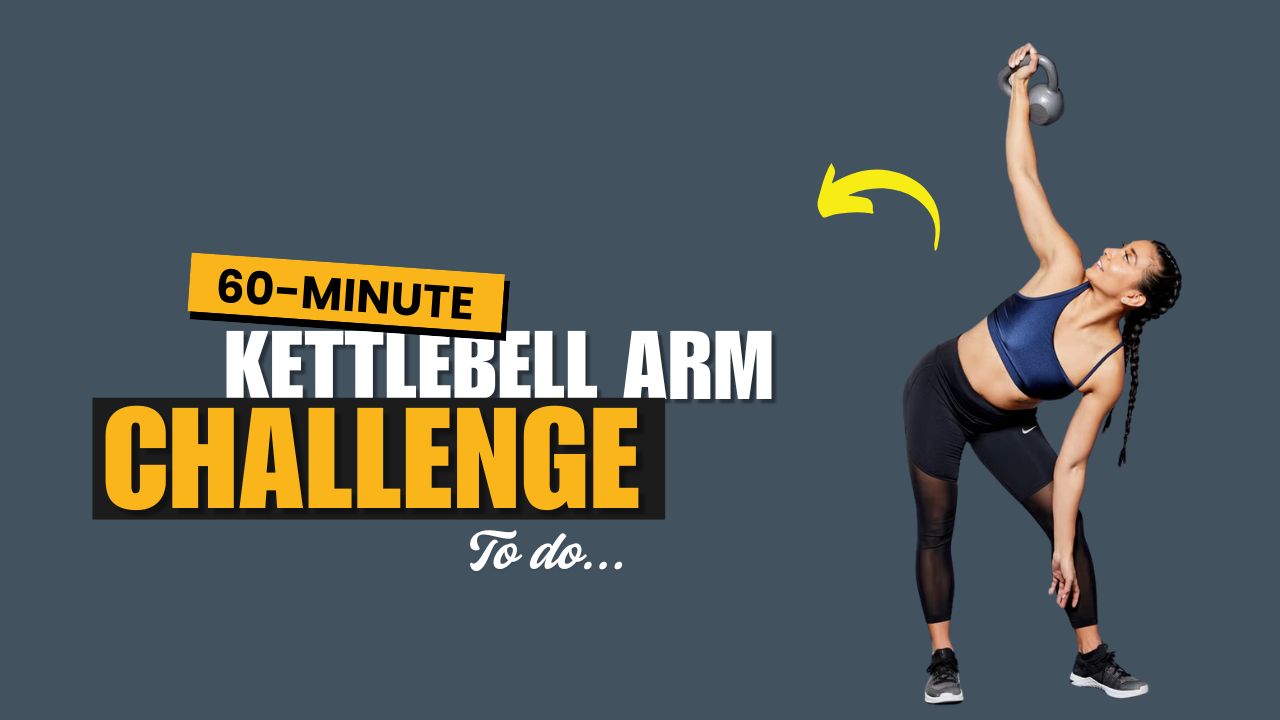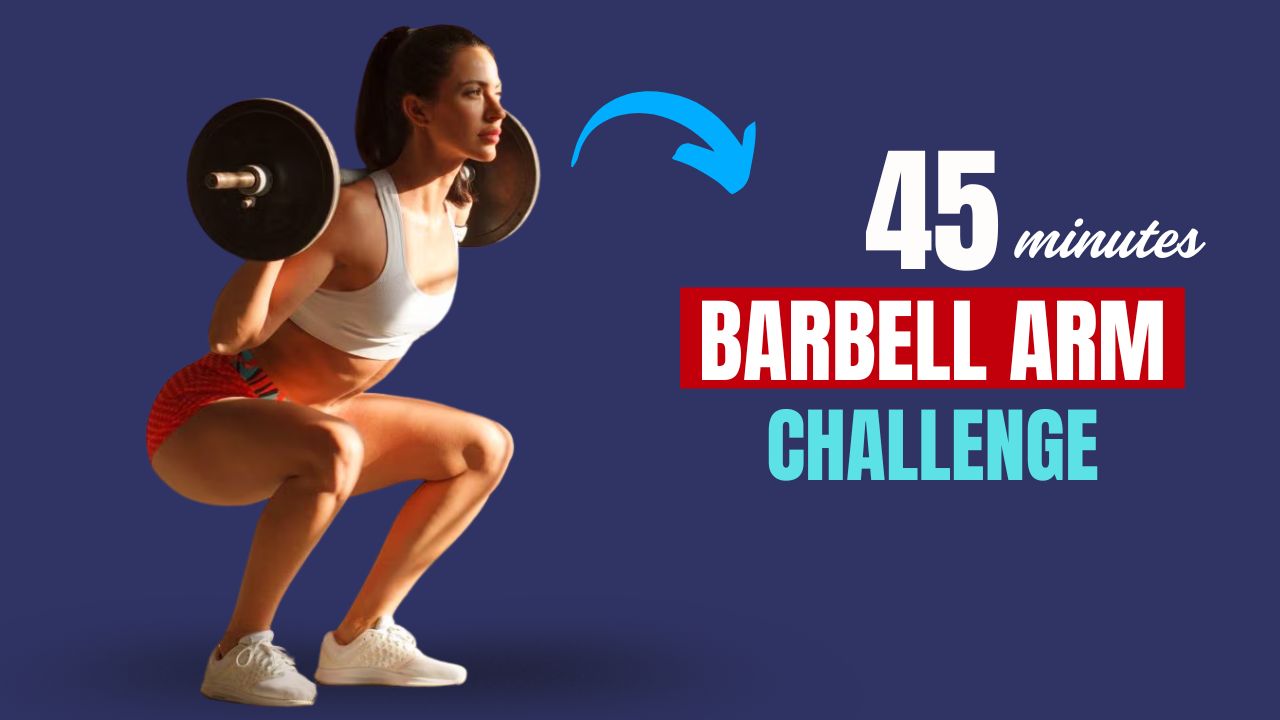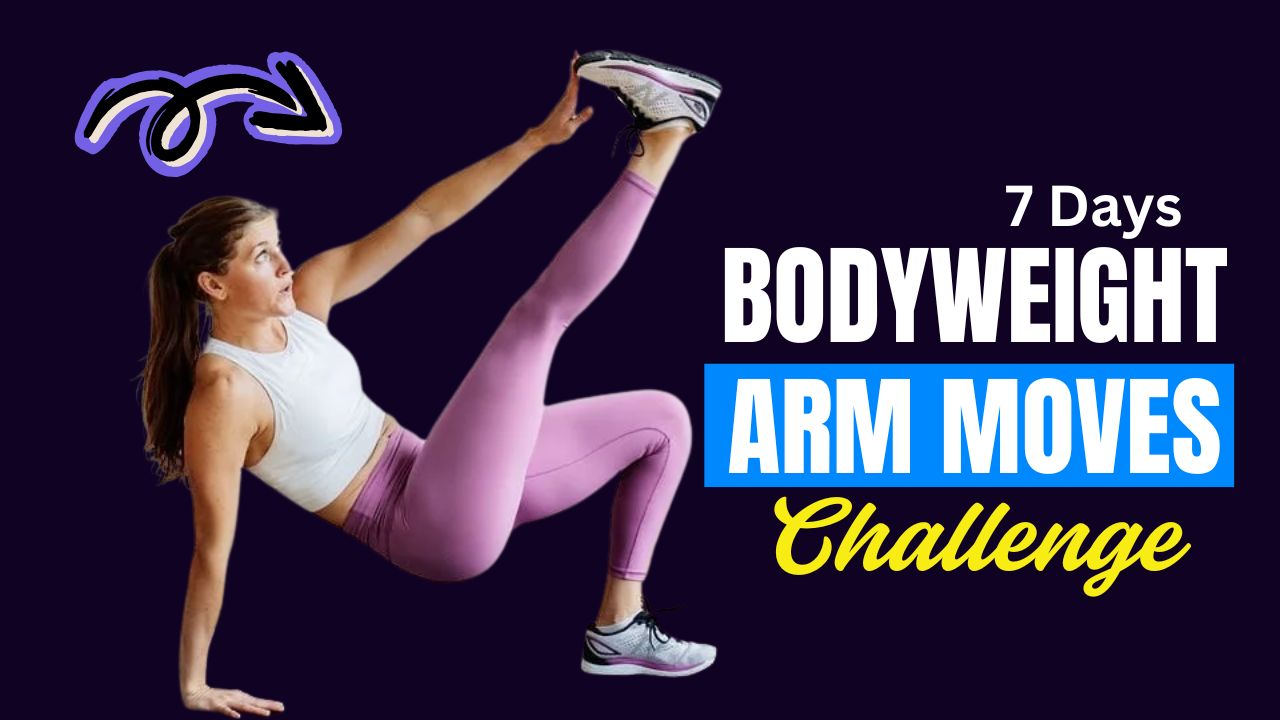Ever heard someone say kettlebells are bad for your back?
That’s a myth — but only if you use them wrong. In truth, when used properly, kettlebells are one of the most effective tools for building strength and resilience in your lower back.
Whether you’re recovering from past issues or just looking to bulletproof your spine, these kettlebell moves will help you do just that.
Let’s explore the 10 most powerful kettlebell exercises that not only strengthen your lower back, but also enhance posture, improve stability, and reduce the risk of future pain — all in one go.

Table of Contents
What Can Happen After 30 Days of These Kettlebell Lower Back Exercises
| Positive Changes | Description |
|---|---|
| Improved Lower Back Strength | Muscles like the erector spinae and glutes become more resilient and supportive |
| Better Posture | Core engagement and spinal alignment improve with consistent practice |
| Reduced Risk of Back Pain | Stronger supporting muscles = less strain on the spine |
| Increased Core Stability | Movements like carries and single-leg RDLs train deep core muscles |
| Greater Hip Mobility | Hinging movements unlock tight hips, relieving pressure on the lower back |
| Enhanced Functional Fitness | Everyday movements (lifting, bending, walking) feel easier and more stable |
| More Confidence in Movement | You’ll feel safer and more capable doing daily tasks and exercises |
| Boosted Energy & Endurance | Kettlebell swings and carries increase muscular endurance and stamina |
| Visible Muscle Tone (Glutes & Hamstrings) | Consistent strength training leads to definition in the posterior chain |
| Habit Formation | Daily/weekly training builds discipline and sets the tone for long-term health |
Also Read: 11 Barbell Back Exercises to Build a Thicker, Wider Upper Body
Kettlebell Training for Lower Back: Do’s & Don’ts
| Do | Don’t |
|---|---|
| Focus on proper form before increasing weight | Don’t round your back while lifting or swinging |
| Start with a manageable kettlebell weight | Don’t lift too heavy too soon |
| Engage your core during all movements | Don’t rely solely on your arms in swings |
| Warm up your hips, glutes, and lower back before starting | Don’t skip the warm-up |
| Use controlled, deliberate movements | Don’t rush through the reps |
| Rest between sets and listen to your body | Don’t push through sharp pain or discomfort |
| Practice breathing techniques during lifts | Don’t hold your breath while lifting |
| Include unilateral (single-side) exercises for balance | Don’t neglect one side over the other |
| Keep your spine neutral during all exercises | Don’t hyperextend or excessively arch your lower back |
| Consult a trainer or therapist if you’re recovering from an injury | Don’t self-diagnose or ignore persistent back pain |
Why Focus on the Lower Back?
Your lower back, part of the lumbar spine, is a workhorse. It supports your entire upper body and acts as a central link between your hips, core, and spine. Weakness in this area often leads to poor movement patterns, tight hamstrings, and chronic pain.
Do You Know?
Lower back pain is the leading cause of disability worldwide, and most cases can be prevented or improved through proper strength training and mobility work.
That’s where kettlebells come in — functional, versatile, and spine-friendly (when used right).
1. Kettlebell Deadlift
Primary Focus: Glutes, hamstrings, lower back
How to Do It:
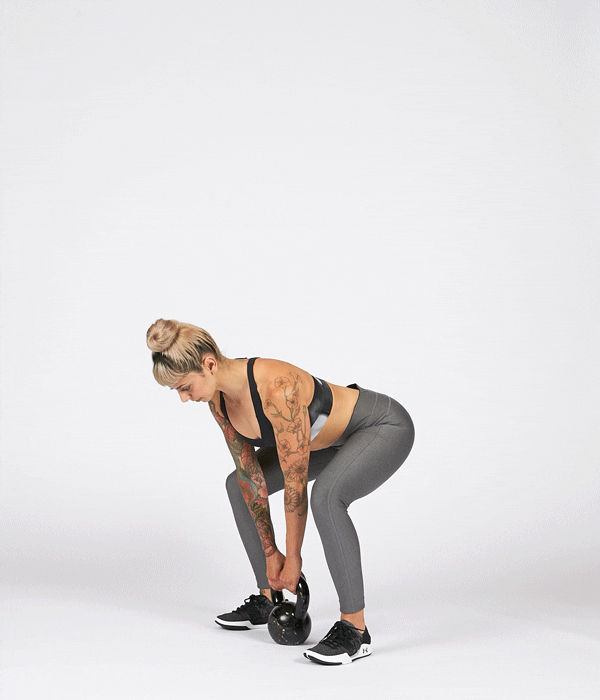
- Stand with feet shoulder-width apart and kettlebell between your feet.
- Hinge at the hips, keep the back flat and grip the kettlebell with both hands.
- Drive through your heels and engage your glutes as you lift.
- Lower slowly with control by hinging again.
Why It Helps:
This move teaches proper hip hinge mechanics and strengthens your entire posterior chain, which is essential for a healthy lower back.
Also Read: 12 Dumbbell Glute Exercises That Build a Rounder, Stronger Butt Fast
2. Kettlebell Swing
Primary Focus: Explosive power, hamstrings, erector spinae
How to Do It:
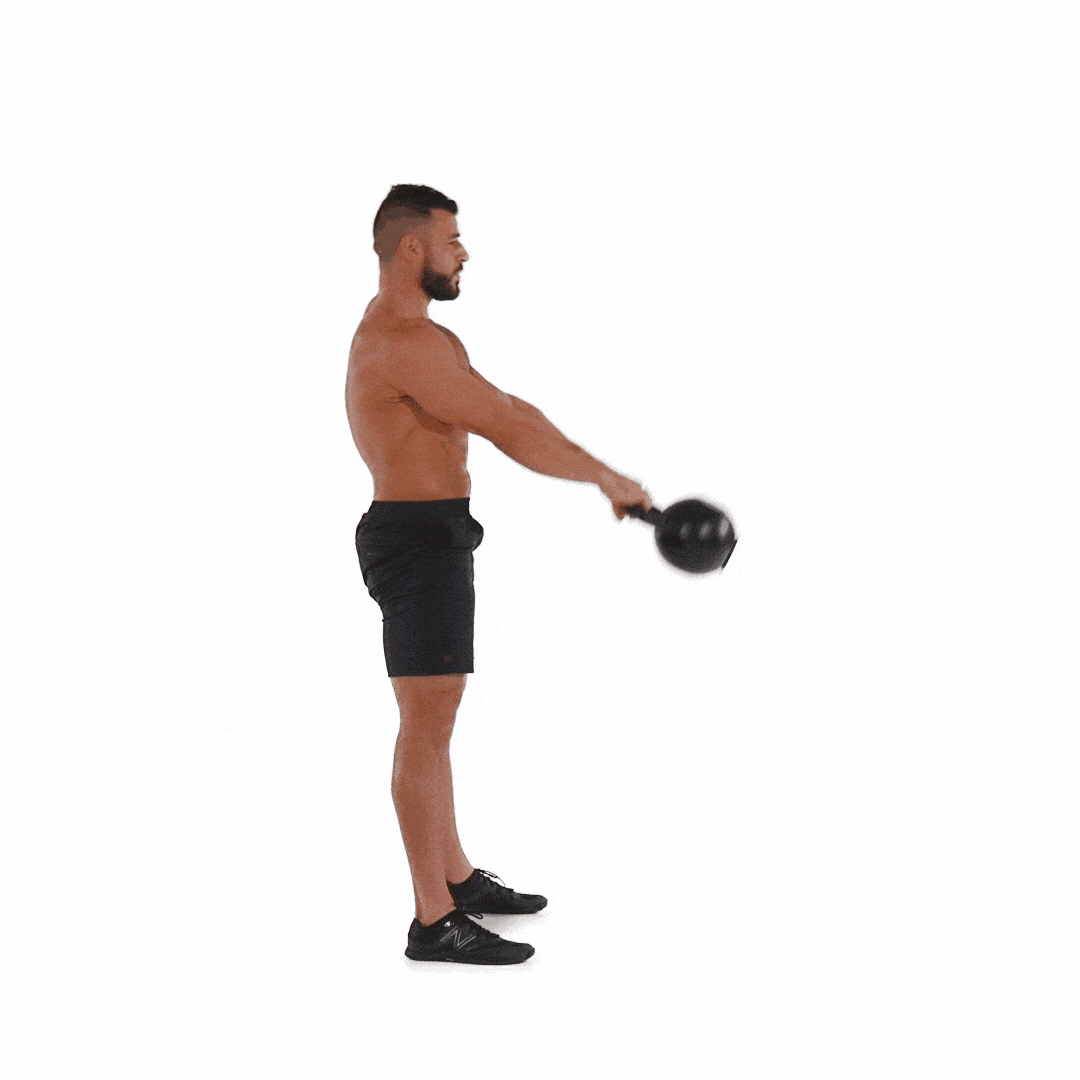
- Start in a deadlift stance with the kettlebell in front of you.
- Swing it back between your legs, then thrust your hips forward to project it to shoulder height.
- Let it swing back and repeat in rhythm.
Tip: Avoid using your arms — the power should come from your hips.
Why It Helps:
Builds endurance in the lower back muscles and teaches dynamic core control. It’s cardio + strength, and spine-safe.
3. Kettlebell Good Morning
Primary Focus: Spinal erectors, glutes, hamstrings
How to Do It:
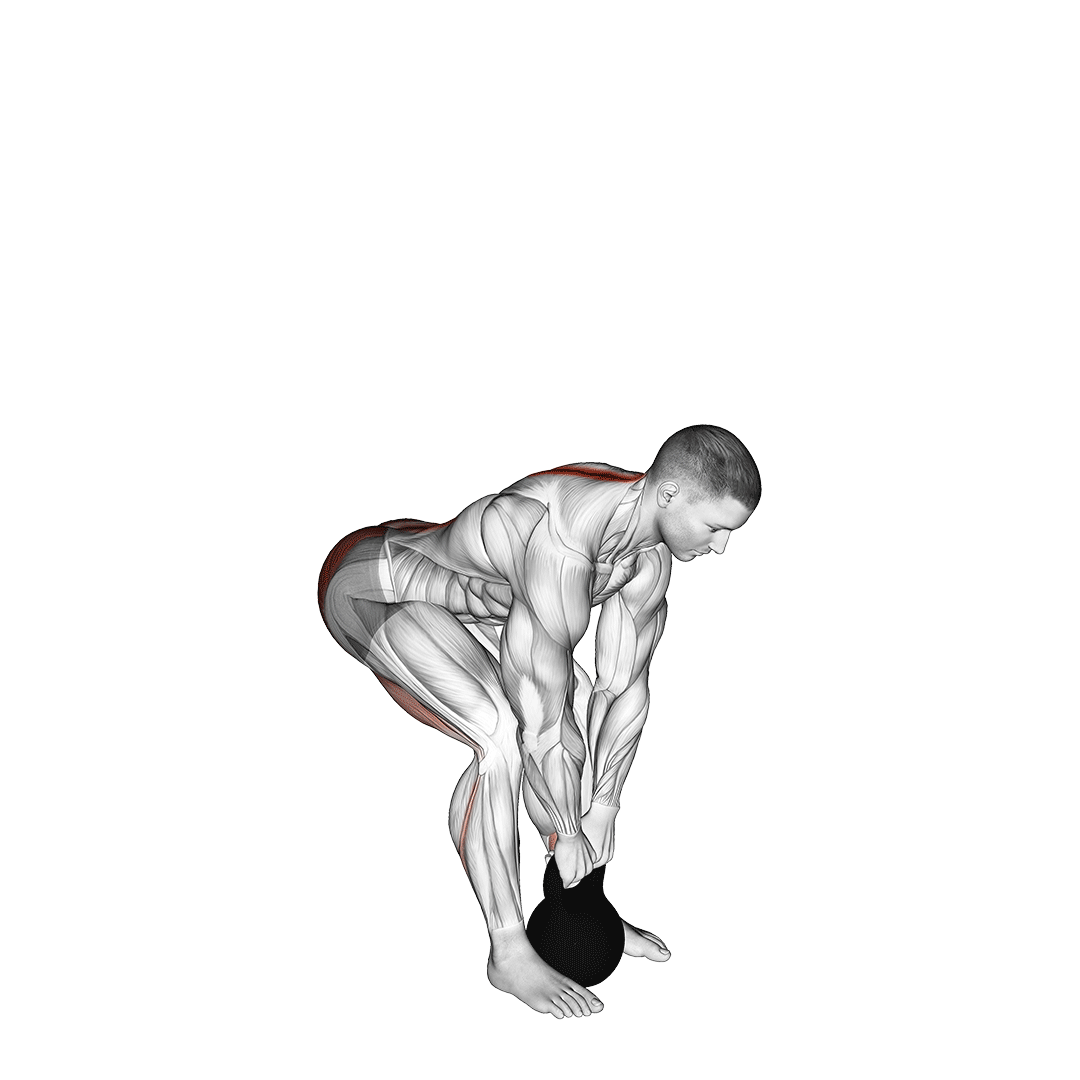
- Hold the kettlebell in a goblet position (chest level).
- Keep knees slightly bent and hinge at the hips, back staying flat.
- Push hips back until you feel a stretch in hamstrings, then return to standing.
Why It Helps:
Teaches proper posture and alignment while directly targeting the muscles that support your lower spine.
4. Kettlebell Suitcase Deadlift
Primary Focus: Lower back, obliques, core
How to Do It:
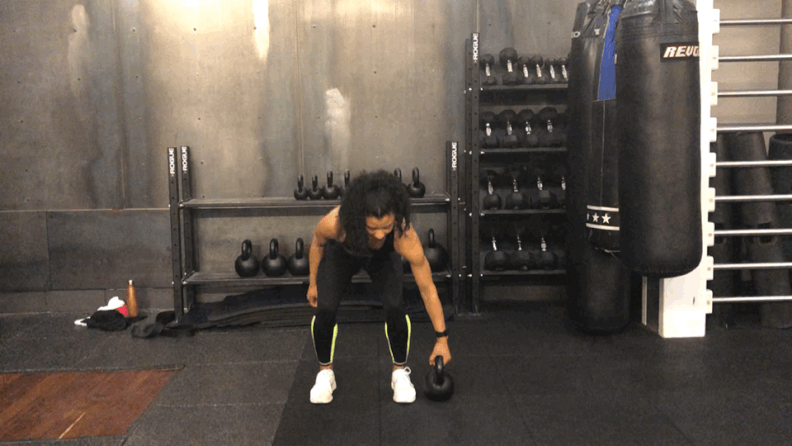
- Stand upright with a kettlebell on one side.
- Hinge and pick it up like a suitcase without tilting your torso.
- Stand tall, pause, then lower it back down.
Why It Helps:
Teaches anti-lateral flexion — training your lower back and obliques to resist side bending. Fantastic for core stability.
Also Read: 14 Dumbbell Exercises to Strengthen Your Lower Back & Banish Pain
5. Kettlebell Romanian Deadlift (Single-Leg)
Primary Focus: Glutes, hamstrings, lower back stabilizers
How to Do It:
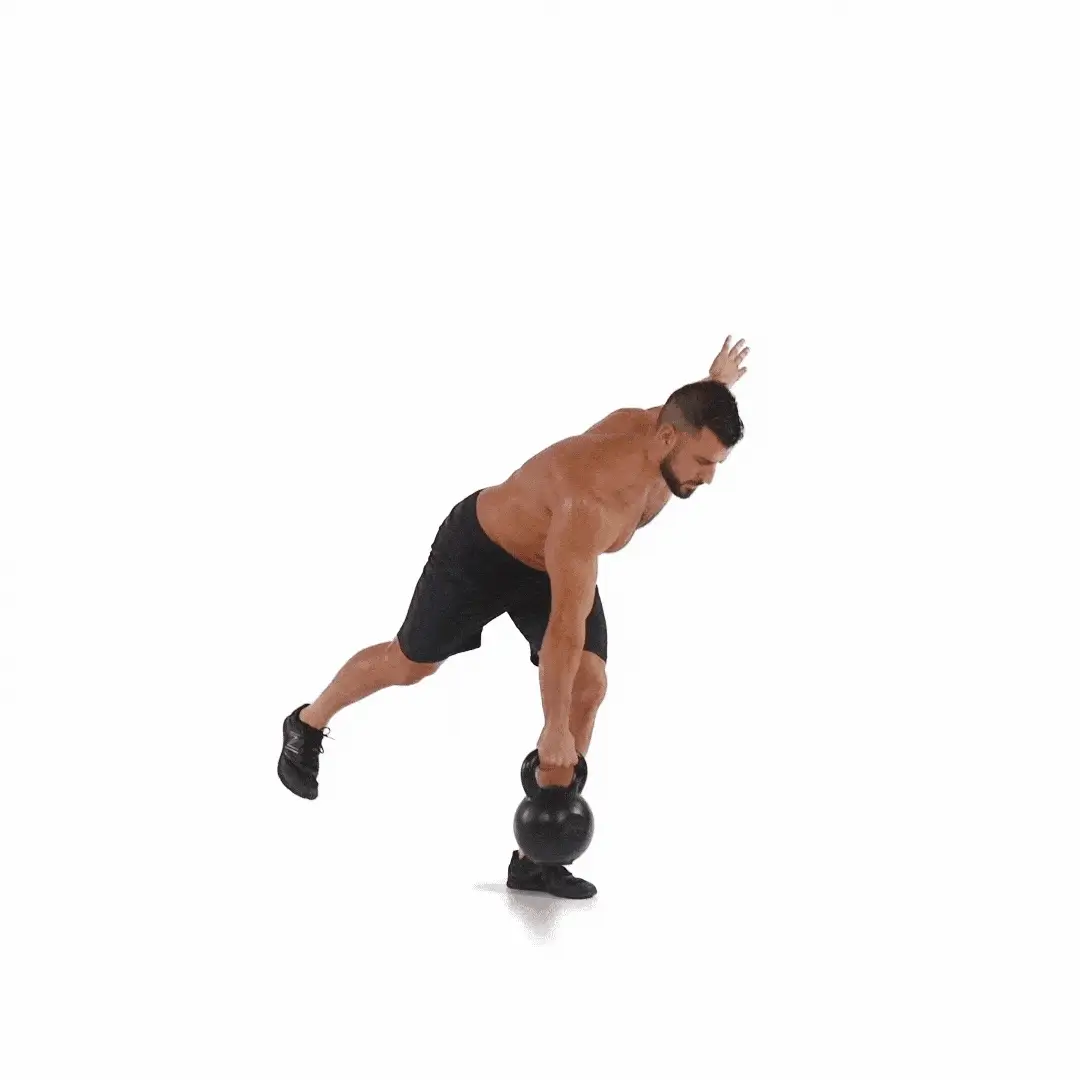
- Hold the kettlebell in one hand, and stand on the opposite leg.
- Hinge forward, extending the other leg straight behind you.
- Keep hips square and back neutral, and return to standing.
Why It Helps:
Trains balance, coordination, and unilateral lower back strength — reducing imbalance that can cause pain.
6. Kettlebell Goblet Squat
Primary Focus: Quads, glutes, spinal erectors
How to Do It:
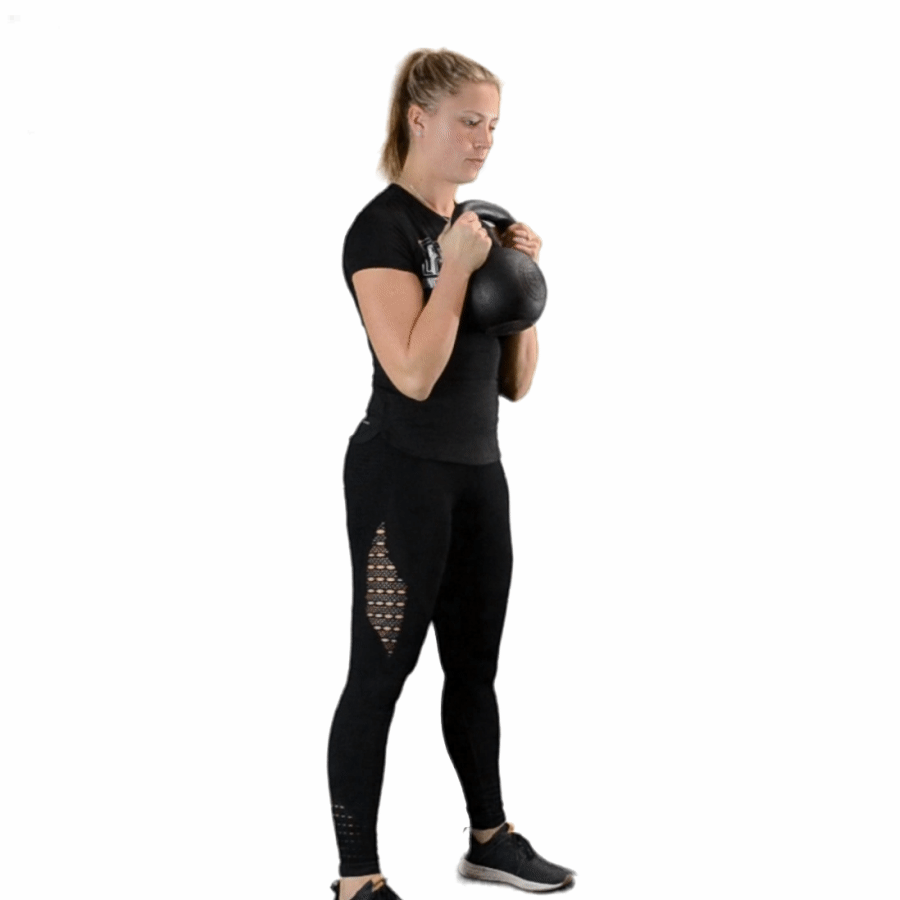
- Hold the kettlebell at chest level.
- Squat down, keeping chest up and knees tracking toes.
- Push through heels to stand up.
Why It Helps:
Builds strong legs and hips, which offloads pressure from the lower back and improves upright posture.
7. Kettlebell Windmill
Primary Focus: Obliques, lower back, shoulders
How to Do It:
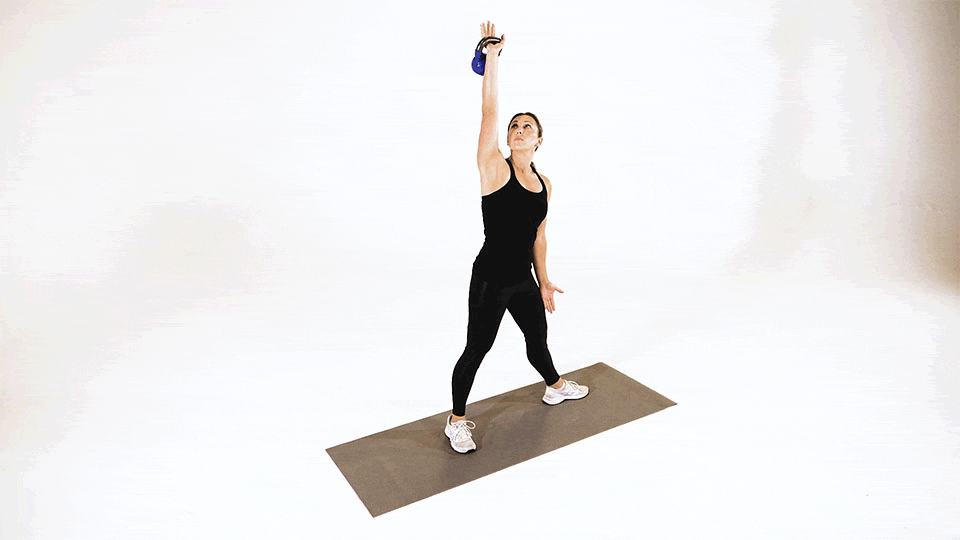
- Hold a kettlebell overhead, feet at a 45° angle.
- Slowly hinge at the hips, reaching your opposite hand down your leg.
- Keep the kettlebell arm straight and eyes on it.
Why It Helps:
Enhances lateral spinal stability, strengthens the QL (quadratus lumborum), and improves thoracic mobility — all helpful for back pain.
Also Read: 13 Best Dumbbell Triceps Workouts for Sleeve-Busting Arms
8. Kettlebell Farmers Carry
Primary Focus: Core, grip, postural muscles
How to Do It:
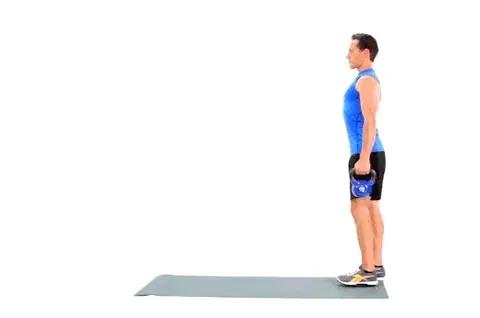
- Pick up two kettlebells by your sides.
- Stand tall and walk slowly with a neutral spine.
- Keep shoulders pulled back, core tight.
Why It Helps:
Simple but effective. Teaches full-body bracing, reduces slouching, and strengthens the entire posterior chain.
9. Kettlebell Hip Thrust
Primary Focus: Glutes, lower back, hamstrings
How to Do It:
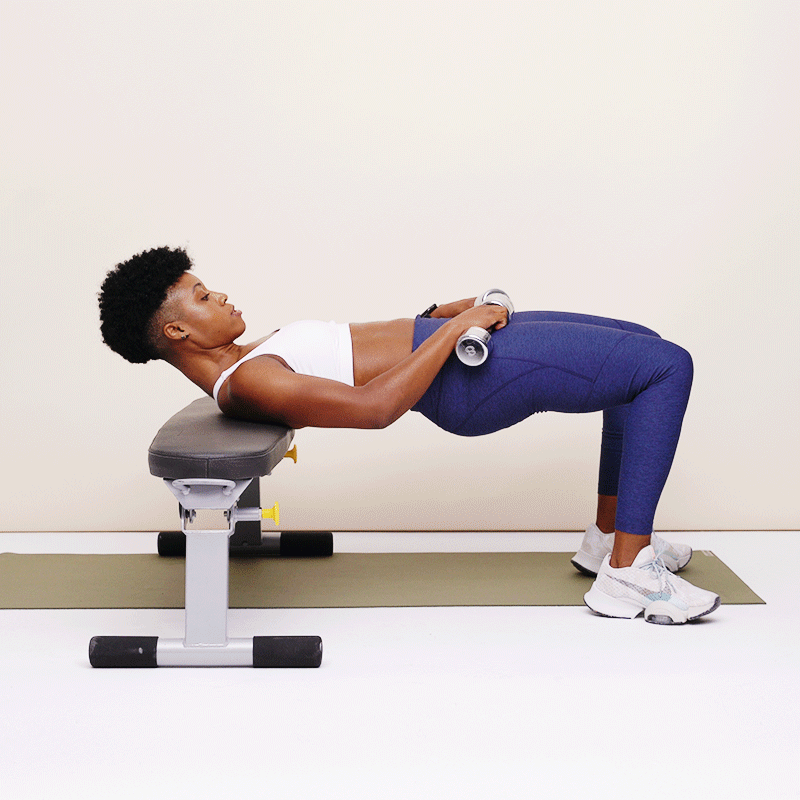
- Sit with your upper back against a bench.
- Place kettlebell on your lap and thrust hips up.
- Squeeze glutes at the top, lower with control.
Why It Helps:
Glutes are your back’s best friend. Strong glutes = less strain on lumbar muscles.
10. Kettlebell Bird-Dog Row
Primary Focus: Core stability, lower back, lats
How to Do It:

- Set up in a quadruped position with one kettlebell under you.
- Extend opposite leg back and row with the free hand.
- Keep hips square and don’t twist.
Why It Helps:
Great for integrating balance and core control while targeting the back muscles. It mimics everyday movement patterns.
Also Read: 11 Dumbbell Back Workouts for a Stronger, V-Tapered Physique
Final Thoughts: Train Smart, Move Strong
Protecting your lower back doesn’t mean avoiding movement — it means training with intention, control, and smart progressions. These 10 kettlebell exercises offer a powerful way to strengthen not just your back but your whole body’s structural integrity.
Interesting Fact:
People who incorporate strength training into their routines are 30-40% less likely to experience chronic back pain later in life.
So grab a kettlebell and start small. Your spine will thank you.
Frequently Asked Questions (FAQs)
Are kettlebell exercises safe for people with lower back pain?
Yes, when performed with proper form and appropriate weight, kettlebell exercises can strengthen the muscles supporting your lower back and help reduce pain over time. However, always consult a healthcare provider if you’re dealing with chronic or acute back issues.
How often should I do these kettlebell exercises to see results?
For best results, aim to incorporate these exercises 2–3 times per week, allowing rest days in between. Consistency and proper technique are key.
Which kettlebell weight is ideal for beginners with back concerns?
Start with a light to moderate weight — typically 8–12 kg (18–26 lbs) for women and 12–16 kg (26–35 lbs) for men. Focus on form first, then gradually increase weight as strength improves.
Can these exercises replace traditional physical therapy?
These moves can complement physical therapy but should not replace it. If you’re in rehab or have specific medical concerns, consult a physiotherapist for personalized guidance.
Do I need to do all 10 exercises in one session?
No, not at all. Start with 3–5 exercises per session, based on your fitness level and time. You can rotate exercises across different days for a balanced routine.
Will kettlebell swings hurt my lower back if done wrong?
Yes — incorrect kettlebell swings, especially rounding your back or using your arms instead of your hips, can strain your spine. Proper technique is crucial to avoid injury and gain benefits.
What if I can’t balance during single-leg kettlebell exercises?
That’s normal at first. Try practicing near a wall or use support for stability. Over time, your balance and core control will naturally improve.
Are kettlebells better than dumbbells for back strength?
Kettlebells offer a unique center of gravity and dynamic range of motion, making them ideal for developing functional strength and movement. While both tools are effective, kettlebells often better mimic real-world movements that challenge the lower back.
Can I do these exercises at home without a gym setup?
Absolutely. All these exercises require just one or two kettlebells and a bit of space. They’re perfect for home workouts.
How long does it take to notice improvements in lower back strength?
Most people start feeling more stable and stronger in their lower back within 3–4 weeks, depending on consistency, form, and overall lifestyle.





